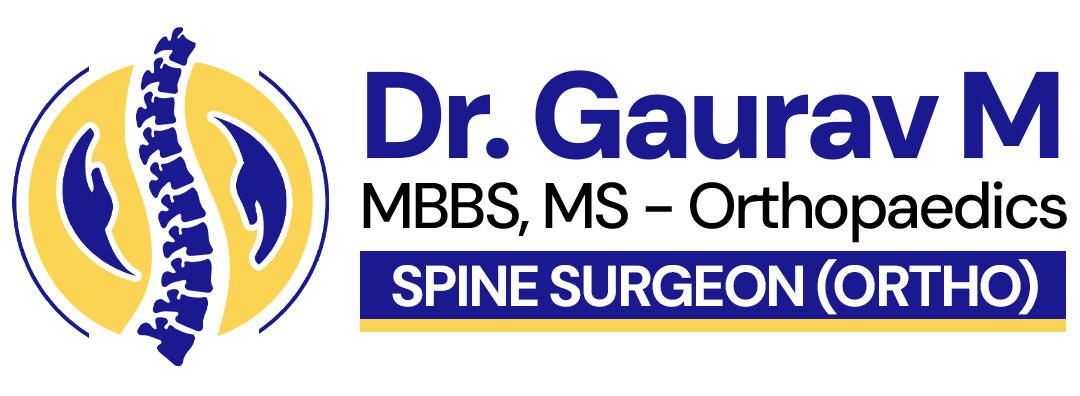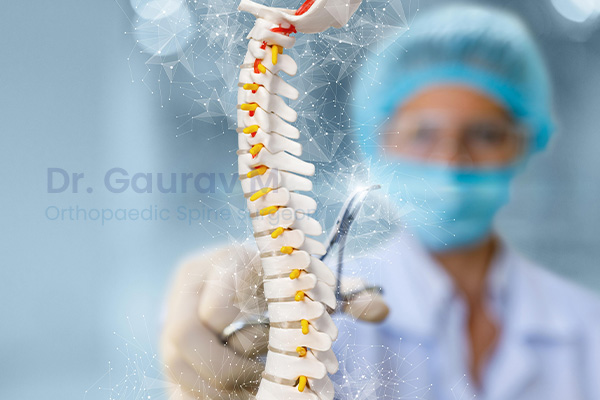Back pain is one of the most common reasons people visit a doctor—and often, the root cause lies in the spine. The spine is a complex structure made up of bones (vertebrae), discs, nerves, and muscles that work together to support our movement, posture, and flexibility. When any part of this intricate system is disrupted, it can lead to pain, stiffness, or even disability. In this blog, we’ll explore some of the most common spine problems and the modern solutions available to manage or treat them effectively.
1. Herniated Disc
A herniated or “slipped” disc occurs when the soft inner portion of a spinal disc pushes through a tear in the tougher exterior. This can press on nearby nerves, causing pain, numbness, or weakness—especially in the lower back or neck.
Solution:
Mild cases can be managed with rest, physical therapy, and medications. In more severe cases, minimally invasive procedures like Endoscopic Spine Surgery can relieve pressure on the nerves without the need for large incisions.
2. Spinal Stenosis
Spinal stenosis is the narrowing of the spinal canal, which puts pressure on the spinal cord and nerves. It’s common in older adults and may cause leg pain, numbness, or difficulty walking.
Solution:
Conservative treatments include physiotherapy, posture correction, and steroid injections. In persistent cases, decompression surgery or laminotomy may be performed to widen the spinal canal and relieve pressure.
3. Degenerative Disc Disease
This condition refers to the wear-and-tear changes that affect spinal discs over time. It can cause chronic back pain, especially when sitting or bending.
Solution:
Non-surgical options include pain management, strengthening exercises, and lifestyle changes. In advanced cases, Spinal Fusion or Artificial Disc Replacement may be recommended.
4. Sciatica
Sciatica is not a condition but a symptom—usually a sharp, shooting pain that travels from the lower back down one leg. It occurs when the sciatic nerve is compressed, often due to a herniated disc.
Solution:
Rest, stretching, and anti-inflammatory medications often help. For persistent symptoms, Endoscopic Discectomy is a highly effective and minimally invasive option.
5. Spinal Deformities (Scoliosis, Kyphosis)
Abnormal curvatures of the spine can develop during adolescence or later in life. Severe curves can lead to posture issues, pain, or difficulty breathing.
Solution:
Mild deformities are monitored or treated with bracing and physiotherapy. Advanced cases may need corrective spine surgery with rods and screws to realign the spine.
6. Spinal Tumors
Spinal tumors can be benign or malignant and may grow within the spinal cord, the spinal canal, or in the bones of the spine. Symptoms vary but often include pain, weakness, or neurological deficits.
Solution:
Treatment depends on the type and location of the tumor. Options include surgical removal, radiation therapy, and in some cases, spinal stabilization procedures to preserve function.
7. Osteoarthritis and Spinal Fractures
Age-related wear of the facet joints and bone weakening due to osteoporosis can lead to arthritis or compression fractures.
Solution:
Management includes medications, lifestyle changes, physical therapy, and in some cases, vertebroplasty or joint replacement surgeries for pain relief and improved mobility.
Final Thoughts
Spine problems can be painful, frustrating, and even life-altering—but the good news is, modern medicine offers a wide range of solutions. From non-invasive therapies to state-of-the-art surgical procedures, there is a path to recovery for almost every spine condition.
If you’re experiencing persistent back pain or neurological symptoms, don’t ignore them. Early diagnosis and appropriate treatment can make all the difference in your quality of life.


